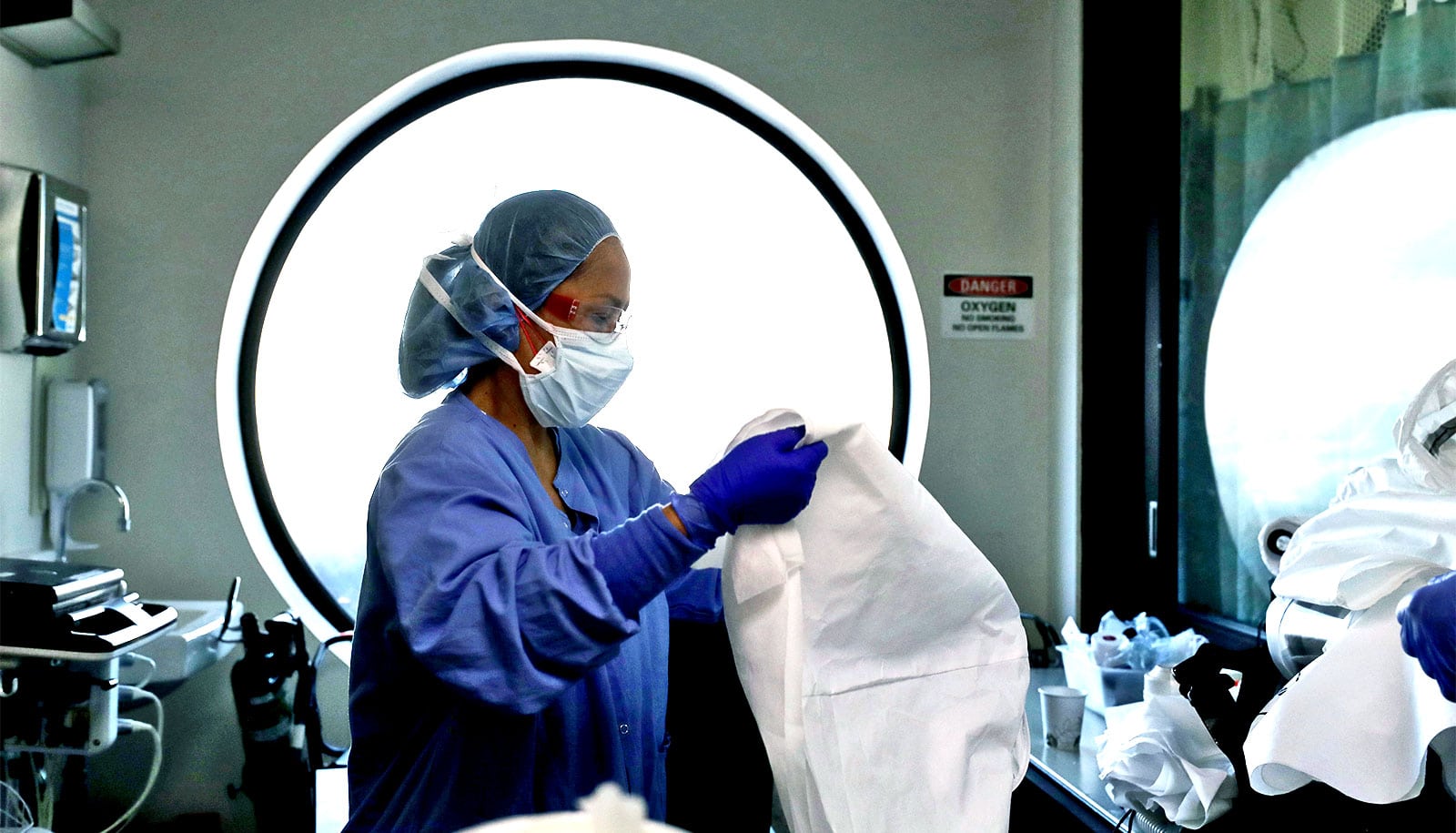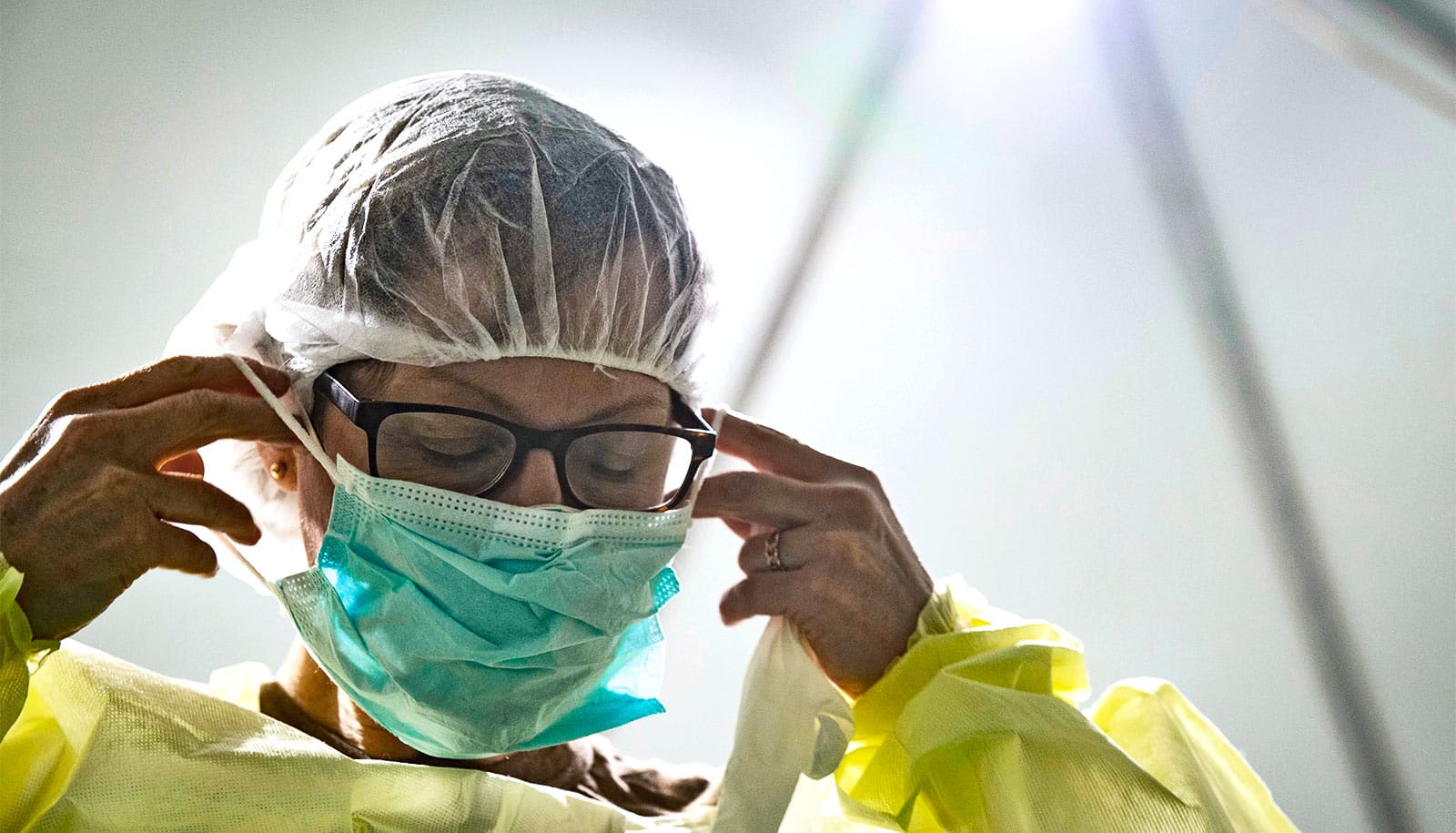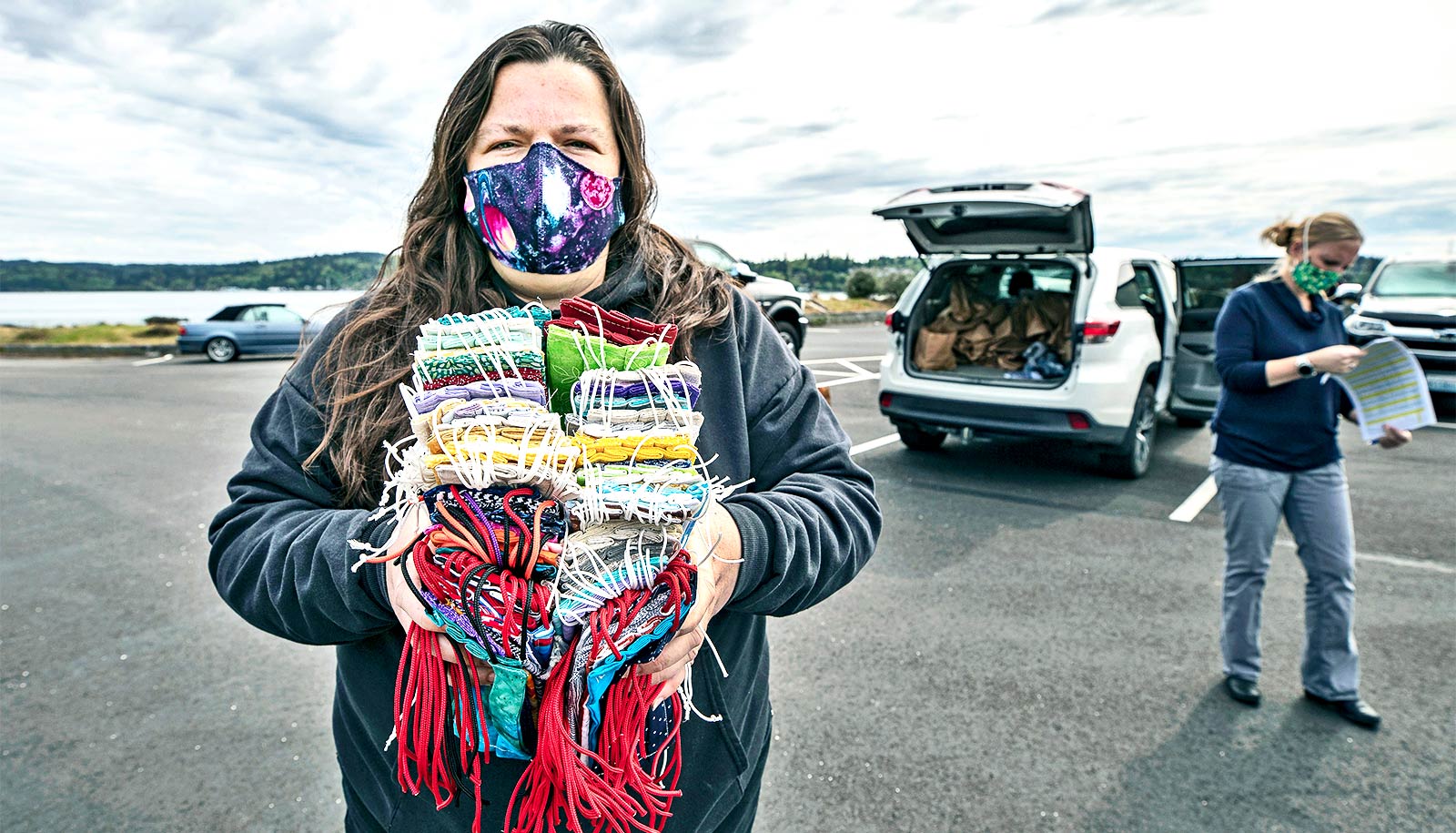Ozone gas could provide a safe method for disinfecting certain types of personal protective equipment in high demand for shielding health care workers from COVID-19, say researchers.
They used two pathogens similar to the novel coronavirus in the study and found that ozone, a highly reactive chemical composed of three oxygen atoms, can inactivate viruses on items such as Tyvek gowns, polycarbonate face shields, goggles, and respirator masks without damaging them. As long as they don’t include stapled-on elastic straps, that is.
The paper shows that the consistency and effectiveness of the ozone treatment depended on maintaining relative humidity of at least 50% in chambers used for disinfection.
“Ozone is one of the friendliest and cleanest ways of deactivating viruses and killing most any pathogen,” says M.G. Finn, chair of the Georgia Institute of Technology’s School of Chemistry and Biochemistry. “It does not leave a residue, it’s easy to generate from atmospheric air, and it’s easy to use from an equipment perspective.”
Scientists can produce ozone with inexpensive equipment by exposing oxygen in the atmosphere to ultraviolet light, or through an electrical discharge such as a spark.
During local and regional peaks in coronavirus infection, shortages of personal protective equipment (PPE) can force hospitals and other health care facilities to reuse PPE that was intended for a single use.
Facilities have used ultraviolet light, vaporized hydrogen peroxide, heat, alcohol, and other techniques to disinfect these items, but until recently, there had not been much interest in ozone disinfection, Finn says.
Ozone is widely used for disinfecting wastewater, purifying drinking water, sanitizing food items, and disinfecting certain types of equipment—even clothing. Ozone disinfection cabinets are commercially available, taking advantage of the oxidizing effects of the gas to kill bacteria and inactivate viruses.
“There was no reason to think it wouldn’t work, but we could find no examples of testing done on a variety of personal protective equipment,” Finn says. “We wanted to contribute to meeting the needs of hospitals and other health care organizations to show that this technique could work against pathogens similar to the coronavirus.”
Phil Santangelo, a virologist in the biomedical engineering department, recommended two respiratory viruses—influenza A and respiratory syncytial virus (RSV) —as surrogates for coronavirus. The two are known as “enveloped” viruses because, like coronavirus, they are surrounded by a lipid outer membrane. Influenza and RSV are less dangerous than the SARS-CoV-2 coronavirus, allowing the researchers to study them without high-containment laboratory facilities.
The researchers devised a test procedure in which solutions containing the two viruses were placed onto samples of the PPE materials under study. The solutions were allowed to dry before researcher placed the samples in a chamber into which ozone was introduced at varying concentrations as low as 20 parts per million.
After treatment for different lengths of time, the researchers tested the PPE samples to determine whether or not any of the viruses on the treated surfaces could infect cells grown in the laboratory. The entire test procedure required about a day and a half.
“The protocol we set up reports very sensitively on whether or not the virus could reproduce, and we found that the ozone was very successful in rendering them harmless,” Finn says. “Oxidizing biological samples to a significant extent is enough to inactivate a virus. Either the genetic material or the outer shell of the virus would be damaged enough that it could no longer infect a host cell.”
Loren Williams, a professor in the School of Chemistry and Biochemistry, introduced the research team to a manufacturer of ozone disinfection chambers, which allowed evaluation of the equipment using the test protocol. During the test, the researchers learned that having sufficient relative humidity in the chamber—at least 50%—was essential for rapidly inactivating the viruses in a consistent manner.
After subjecting face masks and respirators to ozone disinfection, the researchers evaluated the filtration capabilities of the items. The ozone treatment didn’t appear to negatively affect the N95 filtration material.
But it did damage the elastic materials used to hold the masks in place. While the elastic headbands could be removed from the masks during ozone disinfection, removing and replacing them on a large scale may make the treatment technique impractical. Otherwise, however, ozone may offer an alternative technique for disinfecting other types of PPE.
“Ozone would be a viable method for hospitals and other organizations to disinfect garments, goggles, and gloves,” Finn adds. “It is inexpensive to produce, and we hope that by sharing information about what we’ve found, health care facilities will be able to consider it as an option, particularly in low-resource areas of the world.”
A paper on the research appears on the medRxiv preprint server and will be submitted to a journal for peer review and publication. Additional researchers from Georgia Tech and Emory University and the Parker Petit Institute for Bioengineering and Bioscience contributed to the work.
Source: Georgia Tech



